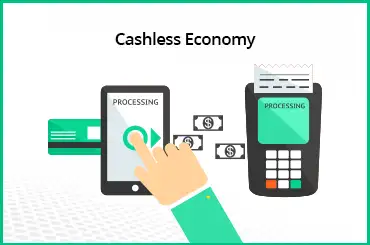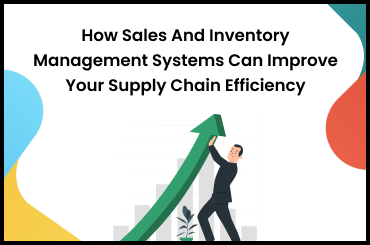For many Indian SME manufacturing companies, managing tax compliance before the introduction of GST was a complex and often frustrating task. Multiple taxes, varying rates across states, and complicated filing procedures made it difficult to maintain transparency and efficiency. This lack of clarity led to higher operational costs, errors, and delays. Goods and Services Tax (GST) is one of India's most notable tax reforms.
In this blog, we’ll understand what is the meaning of GST, advantages and disadvantages of GST to help you understand how it simplifies tax management, and improves compliance. By the end, you'll know how the advantages of GST can benefit your business and also know what are the disadvantages of GST.
What Is GST?
Before understanding the GST merits and demerits, let’s get to know what is GST.
GST is a simplified indirect taxation system that replaces various previous indirect taxes to create a unified tax structure across the country. On 28th February 2006, the annual budget speech introduced GST with the objective of reorganizing the nation's indirect taxation system.
In 2017, the Indian Parliament approved the Goods and Services Tax, thereby entering it into force on 1st July 2017. Initially, all goods and services were to be taxed under a single comprehensive tax. But later on, four slabs were created for all goods and services: 5%, 12%, 18%, and 28%.
There are also separate tax rates on cut diamonds, precious metals, jewelry, and some select automobiles, varying at a rate of 1.5% and 3%. This brings the total to six slabs.
Several motives drove the enactment of GST in India. The top 10 advantages of GST which serve as the main reasons for imposing GST are -
- Multi-tax system to be removed in the country.
- Tax removal on a particular product that has multiple taxes.
- Making online transactions possible.
- Enabling tax return filing online.
- A reduction in tax evasion.
- Increasing the number of businesses covered by the GST system.
- Increasing consumer consumption.
- Ensuring that a product is priced competitively.
- Removal of cascading structures.
- Simple and easy to administer.
Read Best GST Billing and Invoice Software.
However, no taxation system is full-proof on its own. Despite the benefits of GST to government and businesses, there are many limitations of GST associated with it. Any business person or owner of a micro, small, or medium-sized enterprise must be aware of both GST advantages and disadvantages.
As a snapshot, here are the top 10 disadvantages of GST in India, which will be explained in detail later in the article:
- Variation in interstate and intrastate tax controls.
- Challenges in shifting from old systems to new regimes.
- Multiple tax slabs.
- Impact on small businesses.
- Inflationary effects.
- Classification and interpretation issue.
- Technology infrastructure challenges.
- Impact on the unorganized sector.
- Initial cost and training.
- Impact on specific industries.
This article will examine some of the key advantages and disadvantages of GST and also guide you to a tool for finding GST details.
Also Read - Importance of HSN Code
GST Advantages and Disadvantages
Following is a quick overview of the GST advantages and disadvantages for your reference:
| Advantages of GST | Disadvantages of GST |
|---|---|
| Simplifies the tax system by replacing multiple indirect taxes. | One the many drawbacks of GST is that Initial implementation challenges and adaptation period. |
| Eliminates cascading effects of taxes, reducing the tax burden. | Potential inflationary effects on certain goods and services is another GST disadvantages. |
| Improves compliance with a transparent and unified tax structure. | Difficulties in deciding the most suitable regime between the composition scheme (without ITC), and higher taxes. |
| Promotes seamless interstate trade and economic integration. | Possible adverse impacts on specific sectors or industries. |
| Enhances efficiency in tax administration and reduces tax evasion. | The complexity of different tax slabs and rates. |
We have also explained the merits and demerits of GST in depth followed by the GST benefits with examples in the next section.
Also Read - What Is Material Requirement Planning (MRP)
What Are the Advantages of GST?
Here are some key benefits of GST:
Cascading taxes were eliminated
One of the key benefits of GST registration is that GST simplifies indirect tax regimes by bringing them all under one roof. Thus, cascading tax effects and tax on-tax processes are efficiently eliminated. Consider the following example for a better understanding of the impact of such elimination.
During the pre-GST era
For example, a business consultant may extend services for Rs. 50,000 and charge a service tax of 15%, resulting in Rs. 7500 (50000 X 15%). In the case of the consultant, he purchased office supplies for Rs. 20000 and paid VAT at the rate of 5% without deducting anything, thus paying Rs.1000 (20000 X 5%). Cash outflows would total Rs. 8500.
GST post-implementation
Cash outflows for business consultants are as follows: Services are subject to 18% GST, i.e., Rs. 9000 (50000 X 18%). Office supplies are exempt from GST. Hence, the net GST amount is Rs. 8000 (9000 - 1000).
Higher threshold limit
A higher registration threshold was enacted with the implementation of GST norms. Before GST regulations, businesses that have a turnover of more than Rs. 5 lakhs (which varied by state) were subject to register for Value Added Taxes (VAT).
Under the new GST regime, this registration threshold limit was increased to Rs. 40 lakhs and Rs. 20 lakhs for businesses operating in specific special category states. This has provided relief to many small service businesses.
Enhanced compliance checkpoints
Before the new tax regime, VAT and service tax each carried different compliance requirements. For example, excise returns were filed monthly, while for service tax, companies and limited liability partnerships filed them monthly, and partnerships and sole proprietorships quarterly. Conversely, VAT returns vary a great deal in terms of filing.
In this aspect, the role and importance of GST are noteworthy. GST has simplified the tax filing process, as taxpayers now have to file just one return. By using a GST invoice generator businesses can unravel more benefits of this tax system. Another key benefit of GST is that it also brings regulation and accountability to unorganized industries such as textiles and construction.
Composition Scheme
The Composition Scheme can reduce taxes for businesses with a turnover of less than Rs. 1.5 crore (Rs. 75 lakhs for specific states). This option has achieved a significant reduction in the applicable tax rate and a considerable reduction in compliance burdens. In weighing the advantages and disadvantages of GST, this pointer proves vital.
Litigation is reduced, and the process is hassle-free
The benefit of GST registration and tax returns is that taxpayers can now file taxes online. This process has been made easier thanks to the simple interface and hassle-free approach.
Emerging GST-compliant software vendors make e-governance of GST easy and affordable. Furthermore, it enables smooth assessments for both small and large businesses by simplifying taxation jurisdiction between the states and the central government.
A more efficient logistics system
Previously, Indian logistics companies maintained multiple warehouses across states to avoid Central Sales Tax (CST) and state entry taxes, resulting in warehouses operating at reduced capacity. However, with the implementation of GST, restrictions on interstate movement have significantly decreased.
Furthermore, GST offers geographical flexibility, allowing warehouse operators and e-commerce aggregators to locate their facilities anywhere they prefer, leading to increased profitability by eliminating unnecessary logistic expenses. In order to understand all the advantages and disadvantages of GST, businesses also need to know the disadvantages of GST in India. Let's understand the demerits of GST in detail in the following section.
Also Read - Production Planning and Control Explained
What Are the Disadvantages of GST?
To keep their business up and running, owners must either upgrade to GST-compliant accounting software, enterprise resource planning (ERP) software, or purchase GST software.
However, costs such as software purchases and staff training will add up with any of these alternatives. In addition to this aspect, there are also some other limitations of GST.
Let's look at some of the most common disadvantages of GST:
GST non-compliance can result in penalties
An important limitation of GST is that the GST tax regime may need to be simplified further for small and medium-sized enterprises (SMEs). In order to ensure compliance, GST-compliant invoices must be issued, digital records must be maintained, and returns must be filed on time.
The GSTIN, places of supply, and HSN codes are mandatory details that must be included on GST-compliant invoices. Without these checks, SMEs may have to pay fines and penalties.
Also Read - What Is E-Invoice In GST?
Operational costs may increase due to GST
The implementation of GST may result in increased operational costs for businesses. To ensure compliance with GST regulations, businesses may need to hire tax professionals to handle tax payment methods and related complexities.
This additional expense could gradually impact small businesses, leading to higher costs. Moreover, businesses may also incur increased overhead expenses for GST compliance training programs to educate their employees on the new tax regime.
Inflationary effects
GST implementation initially led to an increase in prices of some goods and services, which impacted consumers and contributed to inflationary pressures.
Online taxation: adapting to the revised system
Businesses are now filing returns and making payments online rather than using pen and paper earlier. Small businesses may need help adapting to this. The best ERP software of 2023 that also enables GST-compliant invoicing can help SMEs adapt to this. SMEs can also search the GSTINs of their vendors using an advanced GST search tool.
It may be challenging for SMEs to pay taxes
Small businesses, particularly those in the manufacturing sector, are likely to struggle under GST. The excise duty was previously applicable only to businesses with a turnover over Rs 1.5 crore. However, GST will now be charged to businesses with a turnover of more than Rs. 20 lakhs.
For SMEs with a turnover under Rs. 1.5 crore, the composition scheme lets them pay a fixed rate between 1% to 6% tax instead of GST and requires fewer compliance requirements. There is a catch, however: these businesses cannot claim input tax credits. Many SMEs will need help deciding between the composition scheme (and no input tax credit or ITC) and higher taxes.
After understanding the GST pros and cons let's see how GST is calculated.
Also Read - What Is Production Management System?
How Is GST Calculated?
When running an enterprise, it is essential to understand the importance of GST calculation and GST benefits with examples.
GST can be calculated in two ways:
- Calculating the net price of a product or service by adding GST
- Removing GST from a price that includes GST
1. In the case of GST addition
You must use the following GST formula to add GST to the price of the product or service: Product price + applicable GST = final price (Price x GST%) = GST applicable Here's an example to help you understand. Imagine purchasing an item worth Rs 1,000 that falls within the 18% GST bracket. You must pay: Rs 1,000 + (18% * 1000) = 1000 + 180 = Rs 1,810
2. To remove GST
When a product is GST-inclusive, GST is subtracted from its price using the GST calculation formula:
Original Price = Price of the product - GST = Net price - [{100/(100 + GST%)}]
We can calculate GST using the following example:
Let's say you purchased a product with a selling price (inclusive of GST) of Rs 105 that falls within the 5% GST bracket.
Price original = 105 - (100/(100 + 5)} = Rs 100
Explain the Benefits of GST With an Example
Let us now look at the GST benefits with an example to understand it better. Punjab is the home of Abeer's cycle manufacturing unit. The business has been in his family for 25 years. As a result, he has experienced both pre-GST and post-GST periods.
Previously, Abeer was required to file multiple taxes and comply with their compliance requirements, but now he only has to pay one tax. Here's what's changed for his manufacturing facility in Punjab in terms of taxation.
Taxes levied before the introduction of indirect taxation was as follows for Abeer's deliveries to Raxo Bicycles, a dealer in Maharashtra:
- Manufacturing was subject to central excise
- Bicycles were subject to VAT/CST levied by the Punjab Government
- Maharashtra Government collected entry tax on goods entering Maharashtra
- BMC collected the octroi.
A bicycle is taxed differently at different points according to Central Excise, VAT, Central Sales Tax (CST), Entry Tax, and Octroi. A tax structure such as this would therefore increase costs. Additionally, bicycle manufacturers cannot claim Central Excise credits against VAT or Service Tax on their products.
The manufacturing unit of Abeer now pays 12% GST to dealers when selling bicycles. For example, if a cycle costs Rs. 2500, it is subject to GST at 12%. A final price of Rs. 3100 is reached after adding accessories such as a lock, stand, carrier, and bell.
Reduced cascading effect
Reducing tax cascading refers to the elimination or minimization of tax on tax in a tax system. Tax cascading occurs when a tax is imposed at multiple stages of production or distribution, leading to taxes being levied on top of taxes.
By implementing measures to reduce tax cascading, such as introducing GST, the aim is to streamline the taxation process and eliminate duplication. GST ensures that taxes are only levied on the value added at each stage of the supply chain, thus avoiding the cumulative tax burden.
An example of tax cascading effects, in the absence of GST, is explained below:
Let's assume, a Punjabi manufacturer selling to a Maharashtra dealer is the first stage. Besides Excise Duty, Maharashtra dealers must pay Central Sales Tax (based on the sales price plus Excise Duty). As a result, the Maharashtra dealer paid Abeer the following price:
The Final price = the Cost Price + the Excise % on the Cost Price + the CST % on (the Cost Price + the Excise % on the Cost Price)
Note: VAT is charged on sales in intrastate (within the same state). The Central Sales Tax is only charged if the goods are sold to a state other than Punjab (for example, Maharashtra to Punjab). In each state, VAT was collected by the government.
Before GST, the Central Government collected CST. The manufacture of goods was subject to excise duty. Abeer collects excise and CST from Maharashtra dealers since he is a manufacturer.
Second stage - When Maharashtra Dealers sell to Maharashtra Consumers Bicycles from Raxo Bicycles are sold in Maharashtra to final consumers. Raxo would measure his cost based on the cost of Abeer plus the excise duty he had paid him. The margin will be added to this price as well. Last but not least, add VAT to this price.
As an example, here is what it would look like
Cost of Abeer + Excise Duty paid = Raxo's Cost
Cost + margin = Raxo's Selling Price in Rs
Raxo's Cost + Margin in Rs = VAT%
Raxo's cost + Margin in Rs + VAT% on (Raxo's Cost + Margin in Rs) = Consumer's Final Invoice Price
Automating GST Activities Within Your SME
The conclusion of GST is that the manufacturing industry benefits from it, as expected, as it reduces tax cascading, resulting in lower production costs. Many manufacturers pay taxes on creditable purchases only when GST has been implemented.
Additionally, tax credits for services (such as warehouse rent, logistics costs, retail outlets, etc.) were unavailable to dealers and distributors. Since these charges were business costs, manufacturers and dealers or distributors usually incorporated them into their item prices. Since the credit restriction was lifted, manufacturing expenses have decreased.
We have reached a critical point in the journey of GST since businesses are seeking new opportunities alongside a recovering economy.
Businesses require assistance to ensure their documents and invoices comply with GST regulations. Without suitable software, they often resort to creating spreadsheets and spending significant time manually calculating various aspects. This manual process hinders their ability to efficiently expand and scale their operations.
TranZact helps SME businesses streamline their invoicing and billing activities in line with GST laws.
Learn How to Streamline Your GST Management with TranZact.
TranZact is more than just an ERP solution. It helps you keep your inventory, production, and transactions under control as well as monitor your sales cycle and inventory from start to finish. Automating your business and reducing your costs effectively in no time are two critical benefits of this tool, that you should not miss.
FAQs on Advantages and Disadvantages of GST
1. What is GST's advantage and disadvantage?
The advantage of GST is the simplification and streamlining of the complete tax system of the nation, while its disadvantage lies in the potential initial implementation challenges and possible inflationary effects.
2. Does GST benefit small businesses?
GST benefits small businesses by providing them with a threshold exemption limit, reducing compliance burden, and enabling them to compete more effectively in the market.
3. What are the advantages of GST?
The advantages of GST include the simplification of the tax system, elimination of cascading tax effects, improved compliance, promotion of seamless interstate trade, and increased efficiency in tax administration.
4. What are the disadvantages of GST?
The disadvantages of GST include initial understanding and implementation challenges, potential inflationary effects, and possible adverse impacts on specific sectors.
5. Does GST replace all existing taxes?
GST replaces various indirect taxes like VAT, excise duty, service tax, and others, but certain taxes like customs duty and direct taxes such as income tax are not replaced by GST.
6. How does GST impact consumers?
GST affects consumers by potentially leading to price changes in certain goods and services. While some products may become cheaper due to reduced tax rates, others may become costlier.
7. Does GST apply to all goods and services?
Yes, GST applies to most goods and services, but certain items fall under GST exempt supply category, zero-rated supply, nil-rated supply, non-GST supply, and schedule III supply. These lists include goods and services such as fruits, bread, grains, salt, funeral and burial, and others.
8. What are the types of GST in India?
GST in India is divided into three types: CGST, SGST, and IGST. CGST refers to Central Goods and Services Tax, SGST refers to State Goods and Service Tax and IGST refers to Integrated Goods and Services Tax. Indirect taxes can be mitigated through this simple division between interstate and intrastate supplies.
9. What do you mean by GST?
GST is a unified tax levied on the supply of goods and services. It covers the entire supply chain and allows input tax credits at each stage, ultimately functioning as a tax on value addition.
10. What is the GST Number?
Goods and Services Tax Identification Number (GSTIN) is an identification number assigned to each taxpayer, primarily dealers and suppliers but also businesses, registered with GST. Registration for GST and obtaining a GSTIN are entirely free of charge.
















